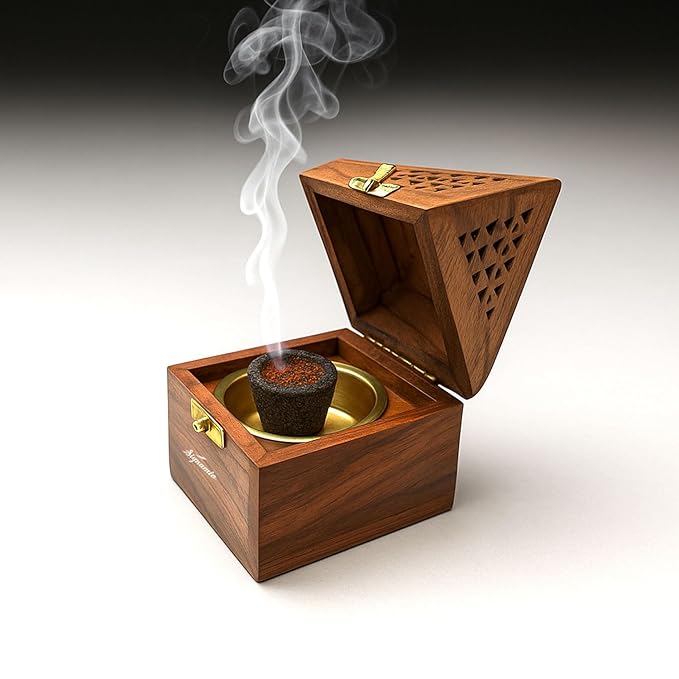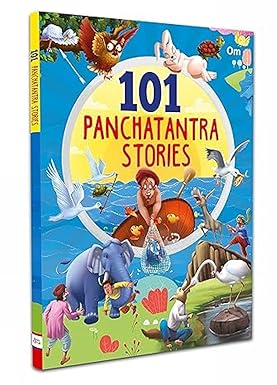અમર તું રાખજે માં માં મારો ચુંડી ને ચાંદલો
અમર તું રાખજે માં માં મારો ચુંડી ને ચાંદલો
બીજું કોઈ જોઈએ ના માં મારો ચુંડી ને ચાંદલો
અમર તું રાખજે માં માં મારો ચુંડી ને ચાંદલો
સુંદર મજા ની લાલ પેરી મેં ચૂંદડી
પૂજન સહિતય લઇ ઉભી દ્વારે ખડી
અભિલાસ પૂરજો માં માં મારો ચુંડી ને ચાંદલો
અમર તું રાખજે માં…
ચૂડલો પહેર્યો છે માં સુંદર મુજ કાન્ત નો
હેમ થી મઢેલો છે હાથી તણા દાંત નો
અવિચર રાખજો માં માં મારો ચુંડી ને ચાંદલો
અમર તું રાખજે માં…
ચાંદલો કર્યો છે માં લાલ કુમ કુમ નો
સેથો પુરયો છે માં અદભુત રંગ નો
અખંડ એ રાખજો માં માં મારો ચુંડી ને ચાંદલો
અમર તું રાખજે માં…
અખંડ સૌભાગ્ય મારુ માત સદા રાખજો
પાપ કષ્ઠ રોગ દુઃખ ભસ્મ કરી નાખજો
આટલું તો આપજો માં માં મારો ચુંડી ને ચાંદલો
અમર તું રાખજે માં…
Overview of “Amar Tu Rakhje Maa”
Song Title and Meaning
“Amar Tu Rakhje Maa” means “Mother, may You eternally protect me.” It expresses the devotee’s plea for perpetual protection from Goddess Amba.
Origins & Composer
This Garba is sung by renowned Gujarati devotional singers like Hemant Chauhan. Its origins lie in Navratri Garba tradition, where devotees evoke divine protection through song. :contentReference[oaicite:0]{index=0}
Cultural Context
The song is especially popular during Navratri among Gujarati communities. It is used in Garba dance circles and devotional gatherings honoring the Mother Goddess. :contentReference[oaicite:1]{index=1}
Lyrics Structure
The lyrics alternate between requests for protection, praise of the Goddess’s beauty and auspiciousness (e.g. ‘chunddi,’ ‘chandlo’), and communal calls to join in dance and belief. :contentReference[oaicite:2]{index=2}
Audio & Availability
“Amar Tu Rakhje Maa” is available via platforms such as Spotify, Apple Music and YouTube. Several versions by different artists give it wide reach. :contentReference[oaicite:3]{index=3}
Lyrics Analysis
Devotional Themes
The song invokes themes of purity, protection, and devotion. The devotee asks the Goddess to safeguard from sins, pain, and suffering. :contentReference[oaicite:4]{index=4}
Imagery of Adornments
There are repeated references to adornments — ‘chunddi’, ‘chandlo’, jewels — symbolizing beauty and offering of self to the Goddess. :contentReference[oaicite:5]{index=5}
Nature & Metaphors
Metaphors like colors, dawn, skies, elements of nature emphasize the grandeur of the Goddess and the devotee’s longing. :contentReference[oaicite:6]{index=6}
Repetition & Rhythm
The refrain “Amar Tu Rakhje Maa” recurs, reinforcing both rhythm (for Garba dancing) and emotional anchor for listeners. :contentReference[oaicite:7]{index=7}
Language & Dialect
Lyrics are in Gujarati, with regional idioms and words that resonate locally; this helps in preserving cultural identity and engaging native speakers. :contentReference[oaicite:8]{index=8}
Musical & Performance Aspects
Melody & Tempo
The song’s tune balances devotional serenity and the upbeat pace needed for Garba. Tempo may increase during refrains to match dance energy. :contentReference[oaicite:9]{index=9}
Instrumentation
Instrumentation includes traditional Garba accompaniments – dhol, manjira, possibly harmonium or other folk instruments to support singing and dancing. :contentReference[oaicite:10]{index=10}
Dance Integration
Garba dancers synchronize steps with lyrical cues (like lines about foot placements or inviting to dance), especially during refrains. This enhances participation. :contentReference[oaicite:11]{index=11}
Audience Interaction
Refrain parts invite call-and-response or group singing. Audience often joins in chorus to build communal energy. :contentReference[oaicite:12]{index=12}
Variation & Cover Versions
Different singers or live performances may include slight variations in tempo, instrumentation, or interspersed verses. These variations help keep the song fresh. :contentReference[oaicite:13]{index=13}
Festival & Cultural Significance
Role during Navratri
It is one of the important devotional songs used during Navratri nights to honor Mother Goddess; helps set spiritual atmosphere before/during Garba dances. :contentReference[oaicite:14]{index=14}
Emotional Resonance
The song evokes a sense of love, surrender, and sometimes longing — for protection and blessings — among devotees participating in the festival. :contentReference[oaicite:15]{index=15}
Preservation of Tradition
Songs like this contribute to sustaining Gujarati devotional music; passing down from older to younger generations during festival gatherings. :contentReference[oaicite:16]{index=16}
Community Bonding
Garba with “Amar Tu Rakhje Maa” brings people together — families, neighbours, all participate, reinforcing social and devotional bonds. :contentReference[oaicite:17]{index=17}
How to Use & Share
Lyrics Translations
Including English or Hindi translations of key verses helps non-Gujarati readers understand meaning and increases reach. :contentReference[oaicite:18]{index=18}
Printable Lyrics & PDFs
Offering printable lyric sheets helps devotees sing along offline and shares useful resource; keeps visitors engaged longer. :contentReference[oaicite:19]{index=19}
Audio/Video Embeds
Embedding YouTube, Spotify, or audio clips allows users to listen directly; increases time-on-page and shareability. :contentReference[oaicite:20]{index=20}
Performers & Credits
Credit singers (e.g. Hemant Chauhan, Bhoomi Trivedi) and other contributors. Helps in SEO as people search by artist names. :contentReference[oaicite:21]{index=21}
Live Performance Tips
Suggestions on how to perform this song live in Garba events — timing of chorus, instrument balance, engaging audience. :contentReference[oaicite:22]{index=22}
“Amar Tu Rakhje Maa” means “Mother, may You eternally protect me.” It expresses the devotee’s plea for perpetual protection from Goddess Amba.
This Garba is sung by renowned Gujarati devotional singers like Hemant Chauhan. Its origins lie in Navratri Garba tradition, where devotees evoke divine protection through song. :contentReference[oaicite:0]{index=0}
The song is especially popular during Navratri among Gujarati communities. It is used in Garba dance circles and devotional gatherings honoring the Mother Goddess. :contentReference[oaicite:1]{index=1}
The lyrics alternate between requests for protection, praise of the Goddess’s beauty and auspiciousness (e.g. ‘chunddi,’ ‘chandlo’), and communal calls to join in dance and belief. :contentReference[oaicite:2]{index=2}
“Amar Tu Rakhje Maa” is available via platforms such as Spotify, Apple Music and YouTube. Several versions by different artists give it wide reach. :contentReference[oaicite:3]{index=3}
The song invokes themes of purity, protection, and devotion. The devotee asks the Goddess to safeguard from sins, pain, and suffering. :contentReference[oaicite:4]{index=4}
There are repeated references to adornments — ‘chunddi’, ‘chandlo’, jewels — symbolizing beauty and offering of self to the Goddess. :contentReference[oaicite:5]{index=5}
Metaphors like colors, dawn, skies, elements of nature emphasize the grandeur of the Goddess and the devotee’s longing. :contentReference[oaicite:6]{index=6}
The refrain “Amar Tu Rakhje Maa” recurs, reinforcing both rhythm (for Garba dancing) and emotional anchor for listeners. :contentReference[oaicite:7]{index=7}
Lyrics are in Gujarati, with regional idioms and words that resonate locally; this helps in preserving cultural identity and engaging native speakers. :contentReference[oaicite:8]{index=8}
The song’s tune balances devotional serenity and the upbeat pace needed for Garba. Tempo may increase during refrains to match dance energy. :contentReference[oaicite:9]{index=9}
Instrumentation includes traditional Garba accompaniments – dhol, manjira, possibly harmonium or other folk instruments to support singing and dancing. :contentReference[oaicite:10]{index=10}
Garba dancers synchronize steps with lyrical cues (like lines about foot placements or inviting to dance), especially during refrains. This enhances participation. :contentReference[oaicite:11]{index=11}
Refrain parts invite call-and-response or group singing. Audience often joins in chorus to build communal energy. :contentReference[oaicite:12]{index=12}
Different singers or live performances may include slight variations in tempo, instrumentation, or interspersed verses. These variations help keep the song fresh. :contentReference[oaicite:13]{index=13}
It is one of the important devotional songs used during Navratri nights to honor Mother Goddess; helps set spiritual atmosphere before/during Garba dances. :contentReference[oaicite:14]{index=14}
The song evokes a sense of love, surrender, and sometimes longing — for protection and blessings — among devotees participating in the festival. :contentReference[oaicite:15]{index=15}
Songs like this contribute to sustaining Gujarati devotional music; passing down from older to younger generations during festival gatherings. :contentReference[oaicite:16]{index=16}
Garba with “Amar Tu Rakhje Maa” brings people together — families, neighbours, all participate, reinforcing social and devotional bonds. :contentReference[oaicite:17]{index=17}
Including English or Hindi translations of key verses helps non-Gujarati readers understand meaning and increases reach. :contentReference[oaicite:18]{index=18}
Offering printable lyric sheets helps devotees sing along offline and shares useful resource; keeps visitors engaged longer. :contentReference[oaicite:19]{index=19}
Embedding YouTube, Spotify, or audio clips allows users to listen directly; increases time-on-page and shareability. :contentReference[oaicite:20]{index=20}
Credit singers (e.g. Hemant Chauhan, Bhoomi Trivedi) and other contributors. Helps in SEO as people search by artist names. :contentReference[oaicite:21]{index=21}
Suggestions on how to perform this song live in Garba events — timing of chorus, instrument balance, engaging audience. :contentReference[oaicite:22]{index=22}

लकड़ी का सांब्रानी धूप स्टैंड अगरबत्ती धारक
Buy Now
101 Panchatantra Stories for Children: Panchatantra Tales for Kids | Animal Fables with Moral Lessons | Timeless Indian Tales for Fun | Indian Storybook with Animal Characters | Read-Alouds, Toddlers | Reading for Bedtime Stories - Large Print
Buy Now